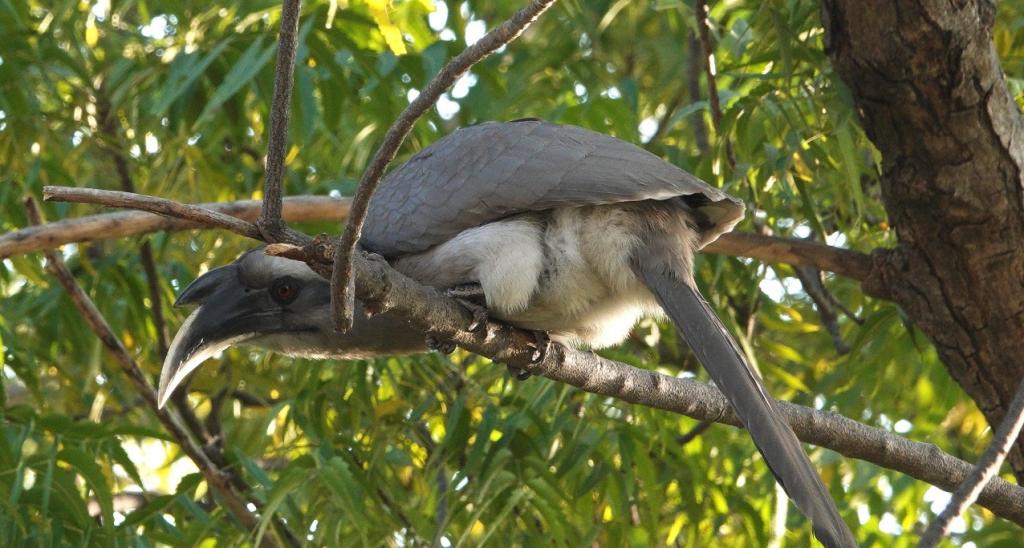

Dol Ka Badh, spread over 105 acres of land in Jaipur’s Sanganer tehsil is home to trees, shrubs and various bird species



Jaipur is in danger of losing major green cover and biodiversity at Dol Ka Badh. Rajasthan State Industrial Development and Investment Corp Ltd, which owns the land, is set to bring up a ‘financial technology park’ there, activists alleged.
Rajasthan Chief Minister Ashok Gehlot had announced for the development of the park in his budget speech February 24, 2021.
“With the aim of developing Jaipur as a Fintech City in the country, I announce the establishment of a Fintech Park,” he had said last year. An amount of Rs 106 crore will be spent on the project.
Dol Ka Badh is spread over 105 acres of land in the Sanganer tehsil of Jaipur, near the Dravyavati river.
“The forest has around 2,500 tress of several native species, around 60 species of birds and lots of wild animals including antelope and hares. It is a part of the rich semi-aird ecosystem of Jaipur,” Kavita Shrivastava, national secretary of People’s Union for Civil Liberties (PUCL), told Down To Earth.
“RIICO floated a tender on April 20 for ‘Jungle Clearance and Surface Dressing Work’ at the proposed Fintech Park, Jaipur. We do not have information as to which firm has been given the tender.
RIICO’s haste in cutting the forest is seen by the fact that the jungle clearance bid happened in May itself,” Shrivastava wrote in a document she shared with DTE.
 A grey hornbill in Dol Ka Badh. Photo: Komal Shrivastava
A grey hornbill in Dol Ka Badh. Photo: Komal Shrivastava
Shammi Nanda, founder of Ahimsagram, a non-profit and Shaurya Goyal, an entrepreneur who lives near the area, have started an awareness campaign and roped in ornithologists and taxonomists to document the biodiversity of the area.
A tree-survey done by botany students of Rajasthan led by former forest officer Devendra Bharadwaj in September 2021, showed that there were 2,421 trees of 30 varieties and 54 varieties of shrubs and herbs in the forest, including Khejri, the state tree of Rajasthan.
“There are nearly 50 varieties of medicinal plants found in the forest,” Ramesh Chand Swami, taxonomist at the National Institute of Ayurveda, said. “Peristroph bicalyculata (Kakjangha), Abutilon indium (Atibala), Tephrosia perpuria (Sarpunkha) and Ailanthus excelsa (Arlu) are found here, along with several others,” he added.
Ornithologists Krishna Meena and Komal Shrivastava documented 64 species of birds in the forest, including resident and migratory.
“The Dravyavati river project in 2018 led to the felling of a lot of trees. The river banks, that were home to various species of birds, insects and were rich in grasses, have now been paved, causing loss of habitat for birds,” Komal, who is associated with All India People’s Science Movement, said.
“Summer migratory birds like Golden Oriole, Common Hawk-Cuckoos and winter migratory birds like Minivet Scarlet, Fly Catchers, Lesser White Throat, Bush Lark along with resident birds like Spotted owl, Alexandrine Parakeet, Plum-headed parakeet, Grey hornbill, etc are found here in large numbers,” she added.
The activists said the air quality index of Jaipur stays between 200 and 250. But it would rise if this last remaining forest was felled.
“We just want RIICO to take the Fintech park elsewhere. Even at the minimum scale according to WHO norms, nine square metres open and green space is required per person. Thus, Jaipur needs to establish 5,850 hectares (58.50 sq km) of urban green spaces to accommodate its growing population. It is time to save every inch of green space,” Kavita added.
“Jaipur has more than 40 industrial areas in four zones. They can build the park anywhere. But they are choosing to clear a whole forest, build high-rise buildings and then sell them to companies. What if the tech and accounting firms do not buy or rent the buildings? All these trees would have been lost for nothing,” Goyal said.
In July 2021, several eminent citizens including Medha Patkar, Syeda Hameed, Harsh Mander, Ramachandra Guha, Javed Akhtar wrote a letter to Gehlot, requesting him to relocate the project.
Earlier in 2021, 300 residents had also written to the RIICO chairperson, requesting that the Fintech park project be shifted from Dol Ka Badh.
“Last year in July, we had a discussion with Kuldeep Ranka and managed to get the felling of the trees stalled. We are still discussing all possibilities with them,” Kavita told DTE.
She added that activists were exploring all possible options, including mass awareness campaigns, discussions, demonstrations and cultural activities to conserve the forest. “We will leave no stone unturned,” she said.
DTE wrote to representatives of RIICO for comment but did not receive any response.
We are a voice to you; you have been a support to us. Together we build journalism that is independent, credible and fearless. You can further help us by making a donation. This will mean a lot for our ability to bring you news, perspectives and analysis from the ground so that we can make change together.

Comments are moderated and will be published only after the site moderator’s approval. Please use a genuine email ID and provide your name. Selected comments may also be used in the ‘Letters’ section of the Down To Earth print edition.